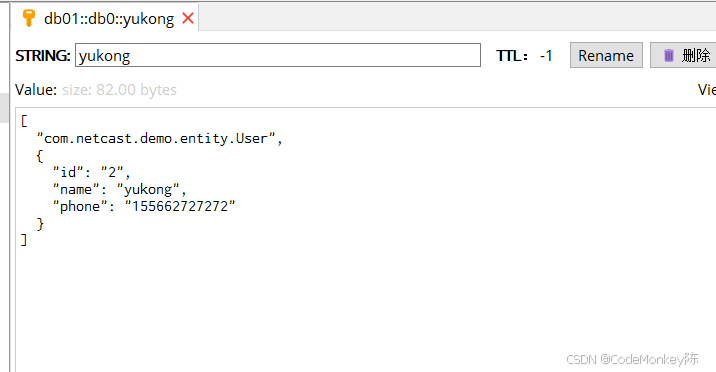实现RandomizedSet 类:
RandomizedSet()初始化RandomizedSet对象bool insert(int val)当元素val不存在时,向集合中插入该项,并返回true;否则,返回false。bool remove(int val)当元素val存在时,从集合中移除该项,并返回true;否则,返回false。int getRandom()随机返回现有集合中的一项(测试用例保证调用此方法时集合中至少存在一个元素)。每个元素应该有 相同的概率 被返回。
你必须实现类的所有函数,并满足每个函数的 平均 时间复杂度为 O(1) 。
代码实现
class RandomizedSet {// 用于存储元素的数组private nums: number[];// 用于记录元素在数组中索引的哈希表private indexMap: Map<number, number>;constructor() {this.nums = [];this.indexMap = new Map();}insert(val: number): boolean {if (this.indexMap.has(val)) {return false;}// 将元素添加到数组末尾this.nums.push(val);// 记录元素在数组中的索引this.indexMap.set(val, this.nums.length - 1);return true;}remove(val: number): boolean {if (!this.indexMap.has(val)) {return false;}const index = this.indexMap.get(val)!;const lastIndex = this.nums.length - 1;const lastVal = this.nums[lastIndex];// 将数组最后一个元素移动到要删除元素的位置this.nums[index] = lastVal;// 更新最后一个元素在哈希表中的索引this.indexMap.set(lastVal, index);// 删除数组最后一个元素this.nums.pop();// 从哈希表中删除要删除的元素this.indexMap.delete(val);return true;}getRandom(): number {// 随机生成一个 0 到数组长度减 1 之间的索引const randomIndex = Math.floor(Math.random() * this.nums.length);return this.nums[randomIndex];}
}// 示例调用
const randomizedSet = new RandomizedSet();
console.log(randomizedSet.insert(1)); // 返回 true
console.log(randomizedSet.remove(2)); // 返回 false
console.log(randomizedSet.insert(2)); // 返回 true
console.log(randomizedSet.getRandom()); // 随机返回 1 或 2
console.log(randomizedSet.remove(1)); // 返回 true
console.log(randomizedSet.insert(2)); // 返回 false
console.log(randomizedSet.getRandom()); // 返回 2
代码解释
-
构造函数
constructor:- 初始化一个空数组
nums用于存储元素。 - 初始化一个空的
Map对象indexMap用于记录每个元素在数组中的索引。
- 初始化一个空数组
-
插入方法
insert:- 检查
indexMap中是否已经存在该元素,如果存在则返回false。 - 若不存在,将元素添加到
nums数组的末尾,并在indexMap中记录该元素的索引,最后返回true。
- 检查
-
删除方法
remove:- 检查
indexMap中是否存在该元素,如果不存在则返回false。 - 若存在,获取该元素在数组中的索引
index以及数组最后一个元素的索引lastIndex和值lastVal。 - 将数组最后一个元素移动到要删除元素的位置,并更新
indexMap中最后一个元素的索引。 - 删除数组最后一个元素,并从
indexMap中删除要删除的元素,最后返回true。
- 检查
-
随机获取元素方法
getRandom:- 使用
Math.random()生成一个 0 到数组长度减 1 之间的随机整数作为索引。 - 返回该索引对应的数组元素。
- 使用
复杂度分析
- 时间复杂度:
insert、remove和getRandom方法的平均时间复杂度均为 O(1)。insert操作主要是数组的push和Map的set操作;remove操作虽然涉及数组元素的移动,但只是常数级的操作;getRandom操作是根据随机索引直接访问数组元素。 - 空间复杂度:O(n),其中 是集合中元素的数量,主要用于存储数组和哈希表。


















